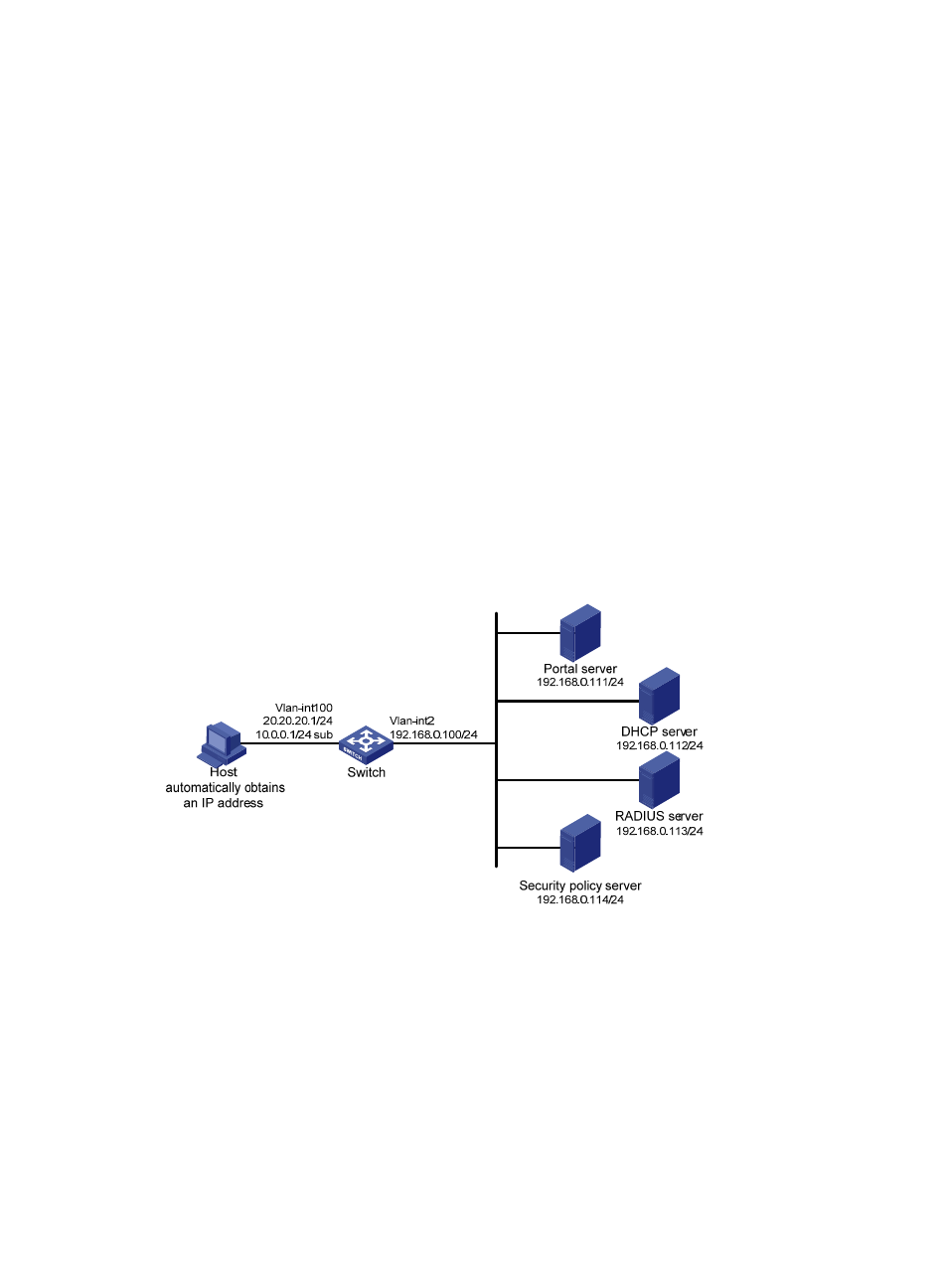Configuring extended re-dhcp portal authentication, Network requirements, Configuration prerequisites and guidelines – H3C Technologies H3C S6300 Series Switches User Manual
Page 140

125
[Switch] display portal user interface vlan-interface 100
Total portal users: 1
Username: abc
Portal server: newpt
State: Online
Authorization ACL: 3001
VPN instance: --
MAC IP VLAN Interface
0015-e9a6-7cfe 2.2.2.2 100 Vlan-interface100
Configuring extended re-DHCP portal authentication
Network requirements
As shown in
, the host is directly connected to the switch (the access device). The host obtains
an IP address through the DHCP server. A portal server serves as both a portal authentication server and
a portal Web server. A RADIUS server serves as the authentication/accounting server.
Configure extended re-DHCP portal authentication. Before passing portal authentication, the host is
assigned a private IP address. After passing portal identity authentication, the host obtains a public IP
address and accepts security check. If the host fails the security check, it can access only subnet
192.168.0.0/24. After passing the security check, the host can access Internet resources.
Figure 50 Network diagram
Configuration prerequisites and guidelines
•
Configure IP addresses for the switch and servers as shown in
and make sure the host,
switch, and servers can reach each other.
•
Configure the RADIUS server properly to provide authentication and accounting functions.
•
For re-DHCP portal authentication, configure a public address pool (20.20.20.0/24) and a private
address pool (10.0.0.0/24) on the DHCP server. (Details not shown.)
•
For re-DHCP portal authentication:
{
The switch must be configured as a DHCP relay agent.
